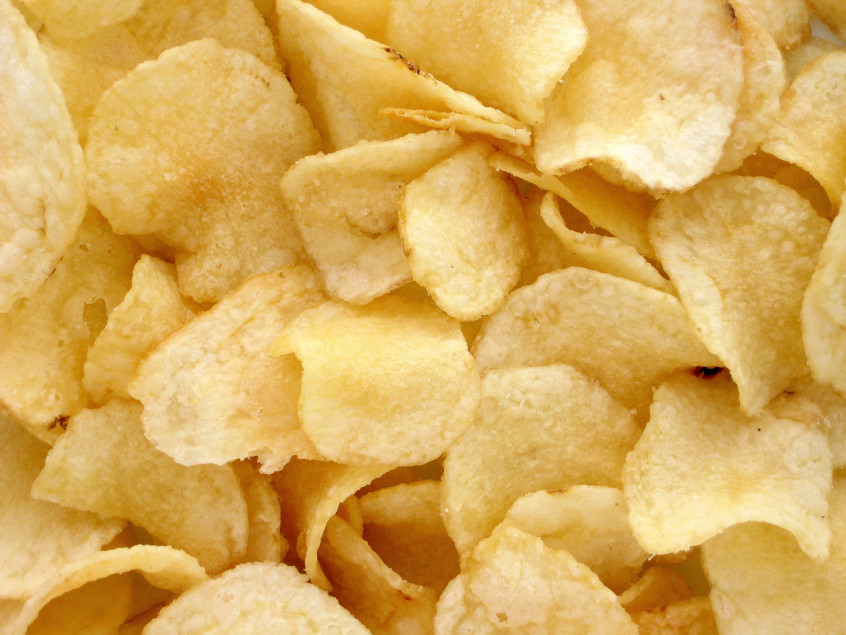Most Kiwis won’t kid themselves, they know chippies and hot chips are fake foods. But that doesn’t stop us eating them, nor indulging in the fantasy that ‘veggie chips’ are somehow a healthier option. Yes, we are looking at you Air New Zealand. Shame.
In our book Appetite Destruction we explored how we get dopamine rewards for eating high fat, high salt, high sugar fake foods. Hot chips with tomato sauce tick all those boxes. This explains the Kiwi love affair with hot chips – almost half of us have them one or more times per week. It probably helps that they are also such a cheap source of energy.
Yet this little indulgence does more than its fair share of dietary damage. Fried potato in its various forms accounts for a whopping 7% of our salt intake and 6% of our saturated fat intake. Young people eat a lot more chips, so for them the figures are higher – 10% of their saturated fat intake. Other similar snacks like corn chips ‘chip’ in another 1% to both these totals.
This adds up. One in five young people (aged 15-18) will eat hot chips three or more times a week. Over a year that is the equivalent of two cups of salt and the fat in 19 blocks of butter.
Of course the worried well are fully aware of the damage that chips are doing to our bodies. So what do we do? Turn to veggie chips of course! These are the latest trend for muddled health conscious consumers who want to get their chippie fix without the guilt. They are aided and abetted by the likes of Air New Zealand that hand out these things free on their flights. Do we really think that frying another vegetable will give a healthier product than frying potato? Do we tell ourselves the pack counts as one of the 5+ a day?
Potatoes have copped a lot of flak lately, perhaps because of their association with chips. You might hear that they are high energy, or high Glycaemic Index. But eating some potatoes in their natural state is fine, as they contain some fibre and nutrients. In fact in studies of ‘satiety’ (how filling food is) the most filling food was plain old boiled potato (with no sauce or butter!). So plain potatoes aren’t all bad as long as you don’t eat too many (which is hard to do anyway because they are so filling).
The problem is when we process the potato into chips. The same study showed that when the potato was turned it into French fries, people had to eat three times the energy to feel as full as they did from eating plain old boiled potato. This result will apply regardless of what vegetable is used to make the chip – frying it basically nukes the nutrients while the added fat and salt will of course preserve it nicely so it can happily sit on the shelf for months. This is what makes this fake food so cheap, which is why it is so tempting for Air New Zealand to feed our addiction by handing them out as freebies.
In fact, the impact of chips on our health could be worse than we first thought. Many are still cooked in saturated fat and trans fats, depending on what frying oil is used. Both hot and cold chips are also our highest dietary source of acrylamide. This is a chemical linked to cancer which is found in starchy (carbohydrate) food that has been cooked in such a way to make it crisp (like frying). So acrylamide will be in your veggie crisps too. In short: stick to your boiled spuds!
If you are going to feed your addiction regardless of what we say, here are a few tips:
- First, the thicker the chip the better, because they have less surface area for a given weight of chips. This means more potato and less fat, and less acrylamide too. This is why the thinly cut McDonalds french fries have so much more fat in them than the ones from the local chippie (but ask your chippie what fat he is using to cook them in).
- If you are snacking, put your chips in a bowl and leave the bag in the cupboard. Otherwise you will get distracted by the telly and miraculously find yourself at the bottom of the bag. Now where did all those chippies go?
- Don’t fool yourself that veggie chips are anything more than overpriced, fancy looking, chips.
This blog is part of a series – “The twelve fake foods of Christmas”
We don’t want to get all bah humbug about your Christmas celebrations, after all this is the one time of year you should be able to let your hair down a bit and not feel guilty about it. But it is a good time to highlight some of the fake foods that can cause some damage if we get into the habit of eating them. We’ve particularly targeted the foods that are marketed to us as “healthy” in an effort to get us to eat them every day, when in fact they are complete junk and should be confined solely to the annual Christmas binge.
Other posts:
12 Fake Foods of Christmas no.1: Cereal Killers
12 Fake Foods of Christmas no.2: Low Carb Beer Belly

